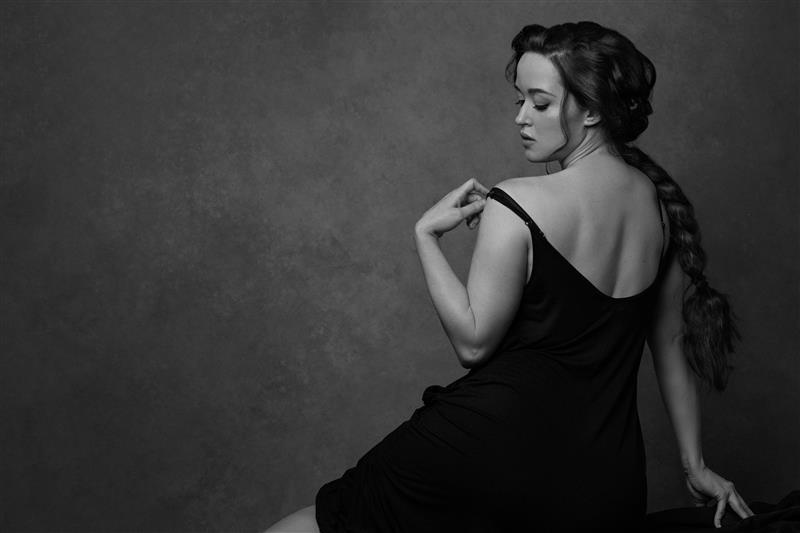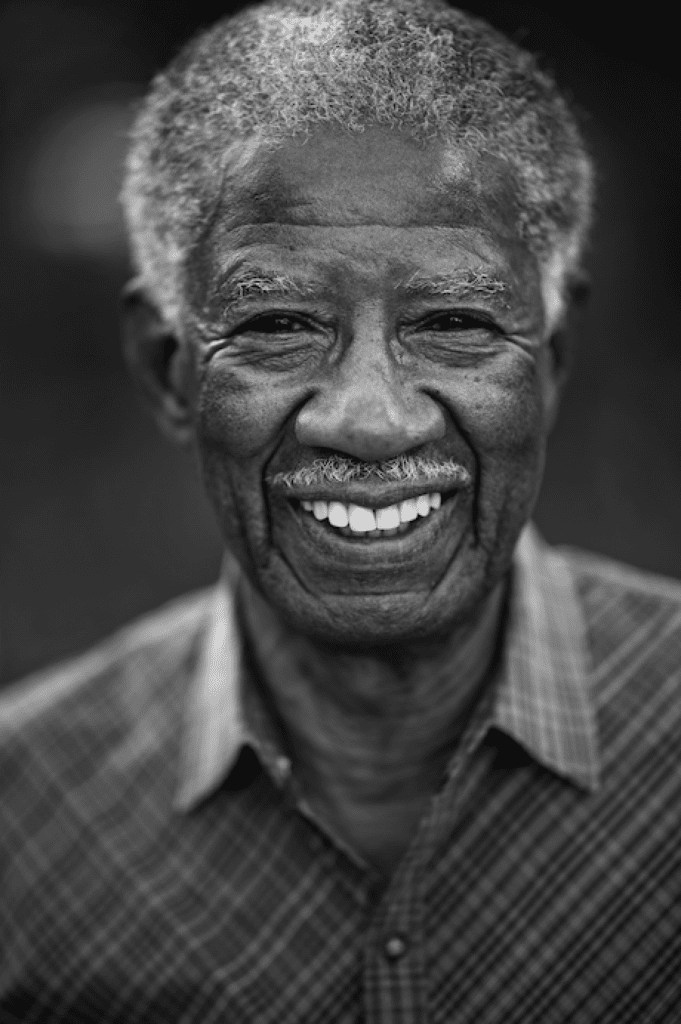News + Features
The Portrait Masters Conference Recap: Creating Connections
October 5, 2022
The Portrait Masters Conference held last month in Phoenix, Arizona, was a bustling 4-day event with 600 attendees on hand for stellar education, hands-on demos, and lots of photo-taking. Overall, it was an atmosphere filled with happy reunions and an emphasis on creating connections as people who had been friends for years online through The Portrait System Members Facebook Group met each other in person for the first time. Others were welcomed in as newcomers who were soon to become good friends as well. We asked attendees, presenters, and mentors alike what the main takeaways of the show were for them.
Maine portrait photographer Matt Stagliano told us that part of what makes this community so special is “that we come from a standpoint of connection and heart that transcends the technical. . . we’re talking from the standpoint of shared experience.”
[Read: The Portrait Masters Awards: Meet The Talented Winners]
That said, the conference was not without opportunities to learn technical skills, with opportunities for one-on-one mentorship throughout the week and demonstrations with lighting equipment and live shooting. Alongside of this, the main stage presentations delved into deeper questions on inspiration and motivation to help entrepreneurs connect with their own reserves and weather the difficulties of running a small, independent business. They also explored methods for photographers to experience deeper connections with themselves and their subjects.

The Portrait Masters’ Lessons From the Main Stage
Sue Bryce, curator of the conference, says she chose the main stage presenters with the intention of addressing the needs of the TPM community. Bryce says the development of portrait photography is being driven by the rise of social media, which has thrown out the old rules of who gets seen. Now, photographers are social curators directly connected to their audience and with a responsibility to empower their followers through their images.
Mentor and presenter Cat Ford-Coates emphasized that ”social curation asks photographers to evolve their purpose to be beneficial to the general audience.” She said that what is at stake is “the transformation of real people, not models, real people.” To accomplish this aim of bringing empowerment to real people requires a “return to the heart.”
[Read: Portrait Masters Conference ‘23: Early Bird Tix + New Offerings]
This need for heartfelt human connection and shared experience has been especially urgent after the last two years of isolation resulting from the pandemic. Presenters talked about how making genuine connections with their subjects depends both on knowing oneself and being open to knowing others.
Ashleigh Taylor kicked off this conversation on Registration Day, speaking about how to make genuine, long-lasting connections on Instagram—a topic that gets right to the heart of social curation. Taylor encouraged photographers to set up their Instagram accounts like business cards and to exchange IG information whenever you meet someone new. She also reminded attendees that behind every profile is a real person who wants to be seen and appreciated. Her three-step method for making the most out of Instagram’s features helps photographers stay engaged with their followers and book clients right in the app. You can learn more about Taylor’s techniques for mastering Instagram on The Portrait System and in The Portrait Master’s Store. Taylor also has a course on how to use Facebook Ads to get solid client leads.
The next day, business coach Tabatha Coffey got right to the core of overcoming limiting fears and moving toward the dreams and desires that motivate us. Sue Bryce’s live interview and portrait shoot with body image expert Teri Hofford illustrated a similar theme. Hofford went deep into the process of how our limiting fears come from our experiences in growing up— both the judgements people place on us and on judgements we hear being placed on others. Hofford encouraged photographers to view their own bodies and the bodies of their clients with a fresh perspective, inviting them to consider how lovingly we look at a chubby baby’s fat rolls and challenging them to consider their own bodies in the same way.
[Read: Teri Hofford on Building a Body-Inclusive Boudoir Photography Brand]
Hofford said she has seen representation of plus-size bodies on boudoir photography websites grow from 5 percent in 2016 to 50 percent today, and she challenged portrait photographers to also bring that representation to their websites. Doing so, she said, will make portrait photography accessible to even more people and help the culture to be more accepting as well.
If you’d like to learn how to pose all kinds of body types, check out Sue Bryce’s course The Pose Series. To learn more about loving your body and others, discover more resources about from Teri Hofford here.

Boudoir photography pioneer Kara Marie also emphasized the uniqueness of individuals. Her presentation challenged photographers to embrace themselves in all their complexity and bring that same understanding of the complexity of others to their client sessions. That way, she said, photographers can go beyond creating technically perfect images and instead create portraits that are unique to their own vision and style and to the person in front of them. She also said she was expecting to “see more breaking of traditional portrait ‘rules’ along with more of a celebration of that rebellion. . . I’m seeing more and more of it amidst personal portrait photographers; it’s catching on!”
Learn all about shooting Boudoir Photography from Kara Marie in her course in The Portrait Masters Store. The sequel to this course will be released soon!
[Read: How to Combine Passion with Market Need to Guide Your Photo Career]
Sony Artisan of Imagery Chris Orwig’s talk went into the process of “seeing deeply.” He also touched on the theme of letting go of obsessing on technical prowess and rather honing in on the mystery of human connection. “There’s an inward journey in portraiture,” he said. “It’s not just about using someone else’s formula. It’s about figuring out who we are and how we connect.” Orwig gave powerful examples of how to achieve emotional images by asking the questions, “Why am I here? What is the universe communicating to me? What is the wisdom [my subject is] transmitting? What are they teaching me?” To make an image meaningful for someone else, he said, you need to tap into why that moment and connection is meaningful to you. To learn how to make your images even more amazing, check out Chris Orwig’s photo-editing course.

© Matthew Jordan Smith
Celebrity photographer Matthew Jordan Smith took this idea of connecting with the meaning and purpose of photography into the realm of the personal with his poignant, Conference-closing presentation. Smith celebrated the photographer’s calling by bringing its importance sharply into focus. For Smith, being a celebrity photographer has been an exciting and fulfilling career path, and he shared some never-before-seen photographs of Aretha Franklin, who he had the honor of photographing for the last 13 years of her life. Having lost his father a month ago to the day from this talk, Smith also shared pictures of his father doing ordinary things like driving, getting his haircut, cooking oatmeal in the morning for his wife, and praying. He said everyday images like these may seem insignificant in the moment, but “they become more precious as time goes by.”
Smith urged photographers to “not just to take pictures of your clients” but also to tell the stories of their own lives. He said, “Record your life and back it up.” Observing life, especially our own lives, he said, will give us a rich experience when we look back over those images later in life. To learn from Matthew Jordan Smith how to create your own signature lighting, check out his Ultimate Lighting Course, and stay tuned for his forthcoming book on Aretha Franklin.
The main takeaway of the conference was that portrait photographers have the unique role of capturing fleeting moments of deep emotional and universal truths revealed in a client’s postures and expressions. These images have the power to transform the course of an individual’s life by giving them a lasting record of what makes them strong, beautiful, and important in this world. That experience can alter the course of not just one person’s life, but the lives of everyone else they impact. The TPM mainstage presenters helped remind the attendees of this duty and responsibility, empowering them with the message that their ability to create these transformations in people is a skill our world urgently needs.
The other mainstage speakers were: Nikki Closser, Saray Taylor-Roman, Damaly Shepherd, Elena S Blair, Dan O’Day, Jason Vinson, and Leslie Andrews. Video of Portrait Masters Conference talks will be released in the coming months and will be available exclusively to Professional and Premium members of The Portrait System.
The Portrait Masters Challenge
Given all this emphasis on finding authentic connection and shooting the everyday experience as well as the curated, it feels especially relevant that the Challenge Category announced at the Conference for The Portrait Masters Awards & Accreditation is Documentary Photography.
You can learn more about Awards & Accreditation and what the judges will be looking for in this category in the blog post below:
Mentorship Options
A multitude of mentoring options at the conference also generated buzz. Attendees took part in five-minute “Speed Mentoring” sessions on Registration Day, and each booth in the Shooting Bay hosted a mentor offering expert advice. Minnesota photographer Richard Schultz spoke with seven mentors for marketing advice. Schultz said, “[they] reminded me not to hide behind my work and to make connections with my clients, so they can hire ME, not just my camera.” Tia Haygood, of Japan, got advice on posing and pricing from four mentors, and she got a hot tip from Ann Landstrom that she could use the website, copy.ai to generate copy for her website. Brandi Angel, of Florida, spoke to six mentors and received advice on marketing and how to automate her business further using 17 Hats, while mentor Saray Taylor-Roman encouraged her to increase the effectiveness of her gift vouchers by increasing their value to $1,000 with a paid $300 session fee. Brandi Angel said it was great to “sit down with people who have already walked this path and gain nuggets of information to propel our own businesses forward.”
Mentor Hadonica Murphy reflected that sentiment saying, “I love mentoring because we work with photographers who are exactly where we were in the start! Every objection or concern, we have the answer because we have done it! I love helping them get to the next level.”
The skills built upon in the mentoring session come from the 90-Day-Challenge business startup program available with membership to The Portrait System. Starting in January 2023, The Portrait System will launch a new 12-Month Start Up Coaching program. Saray Taylor-Roman and Cat Ford-Coates will host monthly live coaching sessions that will supplement the Challenge. Taylor-Roman says the new, year-long mentoring program will set up even more photographers for success. Taylor-Roman, who has a six-figure annual income from her portrait business says, “I want people to see that it’s possible, and they can do this, too. Anything they might need, it is there. They just have to take it.”




